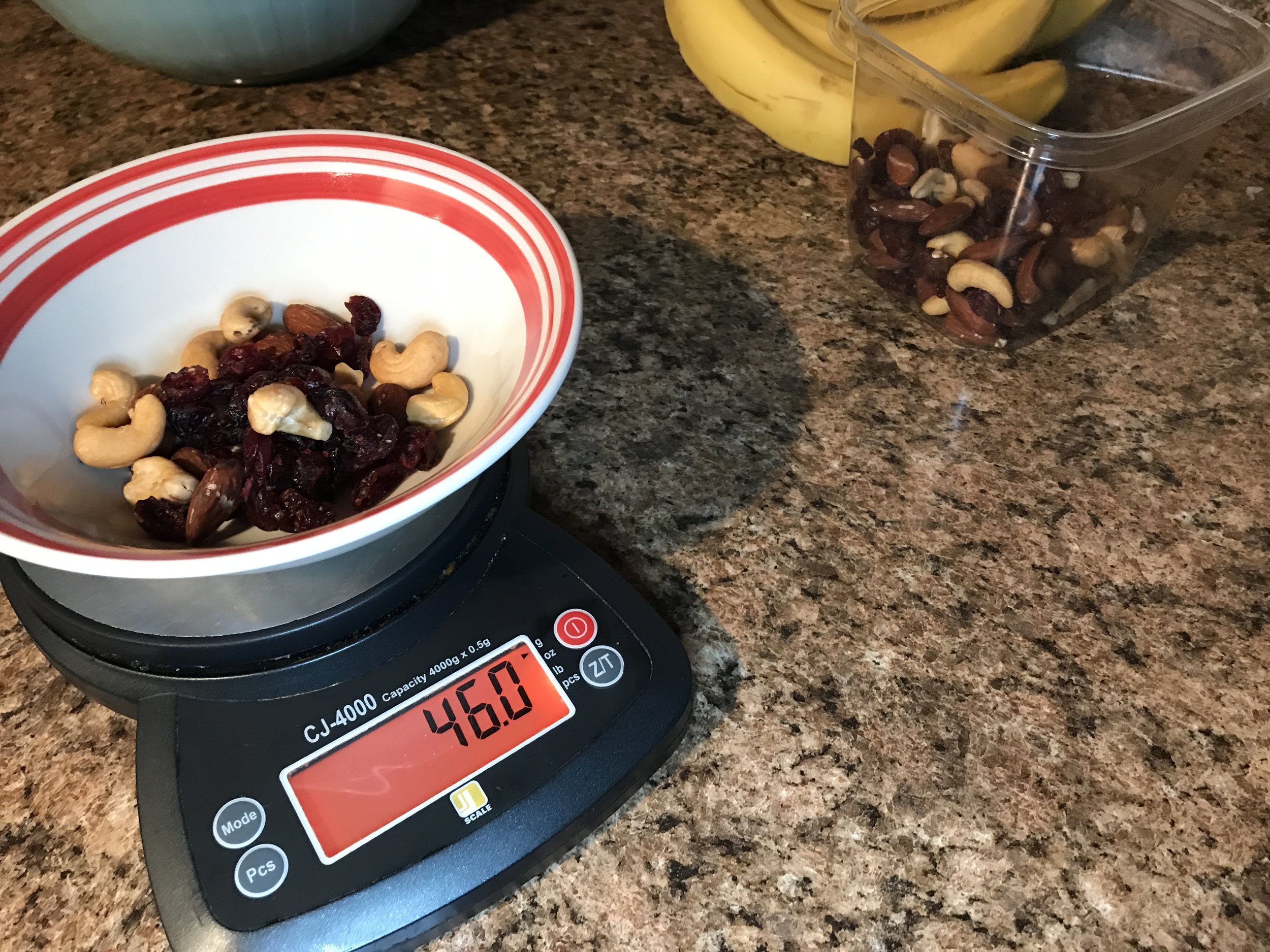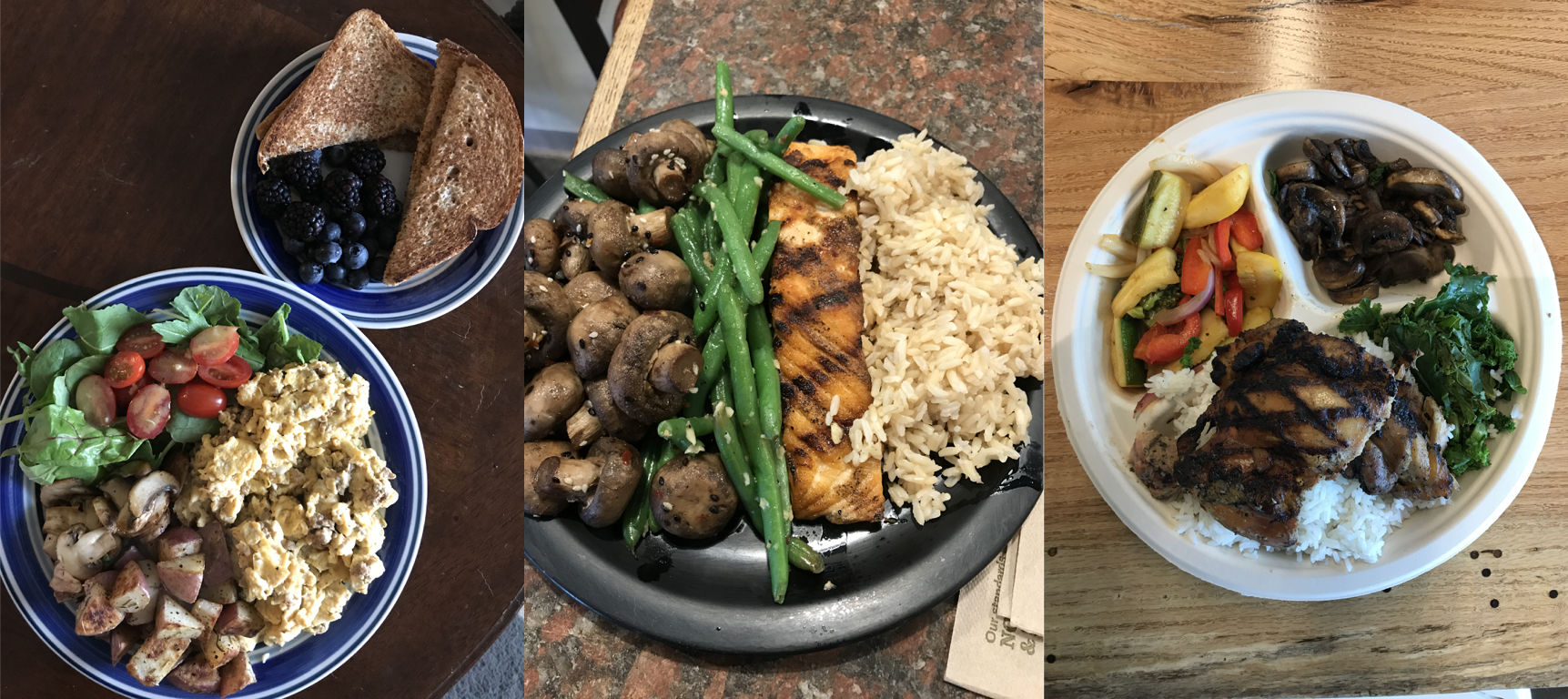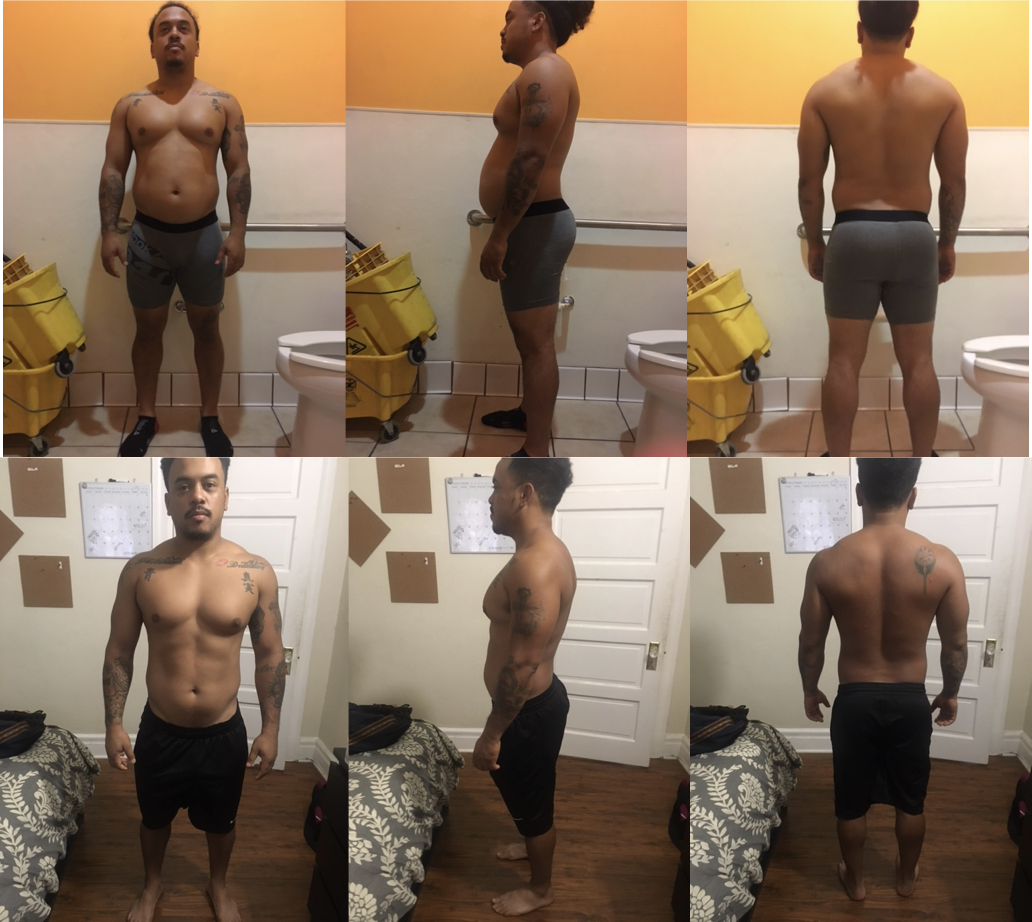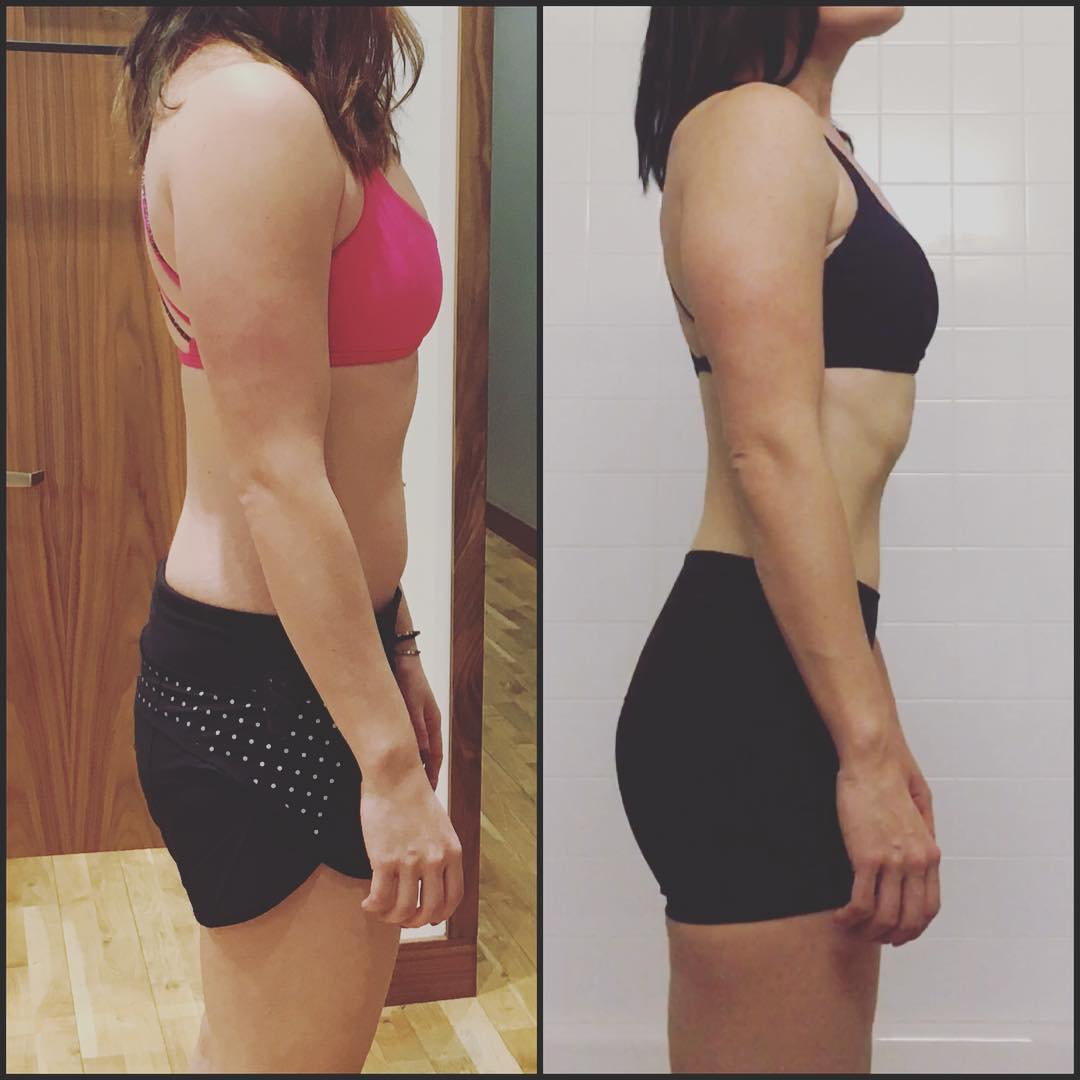Hitting a wall with your fat and weight loss can be frustrating and annoying. However, it’s completely normal for progress to slow down. In fact, you should expect a plateau at some point.
Perhaps you hit a stall and want to keep going or you struggled from the get-go and didn't make any progress at all. You know there’s more to lose, but for some reason, the fat and scale just aren’t budging. What do you do now?
If you want to keep losing fat, you’ll likely need to make some changes to your food intake, your lifestyle and/or your activity in order to break through a plateau. If you’re not sure where to start, here are some things I recommend you consider doing before you completely throw in the towel.
1. Weigh, measure and track your food
If the fat refuses to budge, buckle down and weigh your foods.
Use a food scale or measuring cups to weigh and measure all of your food for a few weeks if that's not something you do regularly. You may discover that single serving of peanut butter was actually 2 servings or the small pour of olive oil you thought was a tablespoon was really 3 tablespoons according to the label.
During this time, track all your food in a calorie tracker like My Fitness Pal and make sure to pay more attention to the entries you're using. Logging an inaccurate entry happens all the time. I had a client that logged an egg omelette, yet the entry only listed the fat macros. We know that eggs have protein so this was an incorrect entry. Errors in tracking or weighing can happen often, and will surely put the brakes on fat loss since you're consuming more calories than you think.
If fat loss stalls, get more low-carb foods on your plate to replace higher carb ones.
2. Eat more #greenshit and less starchy shit
Reducing some high-carb foods can help you get through a plateau. Rice, quinoa, sweet potatoes, whole grains are great to eat, however, they are higher in calorie than lower-carb foods like vegetables.
Try cutting half of your starchier, higher-calorie carbs at each meal and replacing that half with vegetables. If you need to make more changes, try to completely replace high carb foods with veggies. For example, if you normally eat whole grain pasta, do spaghetti squash or use zucchini noodles (zoodles) instead.
Nixing some of those calories can help you start losing fat again and increasing your fiber can help you stay fuller and more satisfied for longer so you don’t reach for more food later.
3. Eat Protein at each meal
Protein is highly satiating which means eating it can help you feel more satisfied with your meals and less likely to reach for more food. Eat some protein at each meal to keep hunger at bay.
Protein takes more energy to digest than carbs and fat so eating it can boost your daily energy expenditure (i.e. burn more calories). Please understand that eating too much protein (or any other food) will negate this effect.
Just make sure you’re getting anywhere from 0.8g - 1.2g protein per pound of bodyweight per day and you can be confident that your protein intake is adequate.
Get protein and veggies at each meal. #basicAFnutrition
4. Watch out for calorie bombs
Some foods are what I call calorie bombs. Some of these are foods are often viewed as a healthy alternative or substitute due to clever marketing (i.e. all-natural, organic, non-GMO, low-carb, high-fiber, and etc). In general, these foods are processed, high in fat and/or carbs and super-tasty which makes them very easy to overeat. You should limit them or watch your intake carefully. They are good candidates to make sure you portion or measure.
Here are some foods to watch:
nut butters
nuts/trail mix
butter
cheese
avocado/guacamole
hummus
dark chocolate
dried fruit
high-fat, processed meats (bacon, sausage, pepperoni, salami)
creamy soups
protein bars (Rx Bars, Builder's Bars, Think Thin and etc)
Fruit and nut bars (Kind Bars, Luna bars, Clif Bars, Lara Bars, Perfect Food Bars)
Granola or granola bars
baked goods like muffins
snacky, crunchy foods (any chips, pretzels, crackers)
Now, I'm not saying you have to eliminate these foods. Just reduce and pay more attention to how much and how often you’re eating them.
5. Watch for bites, licks, and tastes of food
Sometimes we eat food and we don’t even realize it. This is all the more reason it’s important to track your food and also be mindful of your eating. Be mindful and be aware of any extra bites, licks, and tastes. Your body doesn’t care if you only nibbled on a piece of chocolate, you licked the spoon, or you ate the leftovers your kids left behind. That food still counts and the extra calories add up quickly.
6. Change your meal frequency
Perhaps you need to eat more frequent and smaller meals to keep you from getting super hungry throughout the day. Or maybe you should try fasting for a few hours earlier in the day so you can eat bigger, more satisfying meals later. When I am trying to lose fat, I will usually wait until 12 or 1 pm to have my first meal and eat my last meal for the day around 9 or 10pm. This gives me a shorter eating window to get my calories. Therefore, my meals can be larger in size which helps me stay fuller and more satisfied than eating small, frequent meals. This is just one way to implement intermittent fasting and it works for me. You will have to find what works for you in terms of meal timing. In summary, changing your meal frequency may help you better manage hunger and food intake which may help you stay more consistent and get out of the plateau.
7. Have a refeed or a treat meal
I know it sounds crazy but sometimes eating some more food may help you break through a fat loss stall. Restricting calories for a long time and dropping body fat can slow down metabolism and cause hunger to rise. The increased desire for food can lead to uncontrolled eating which knocks you out of fat loss. Plus, if you’ve been restricting foods, you’re likely craving all the tasty stuff and mentally it’s getting difficult to stick to the plan. So if progress slows down, try giving yourself one meal a week to enjoy those foods (high-carb foods especially) in moderation. You may find a a couple of slices of pizza on #vicefriday is just what you needed to start losing again.
8. Get plenty of that high-quality H2O
Drink more water throughout the day, before, and during meals. Evidence indicates that our brain can confuse hunger and thirst (stupid brain). Stay hydrated throughout the day. If you're pounding sugary drinks or sodas, replace them with water, soda water, plain black coffee or unsweetened tea. If you’re thinking about snacking or eating, before you reach for the food, have a big glass of water and wait 15-20 minutes to see if you’re still hungry. If you’re actually hungry, you’ll still be hungry even after drinking water.
9. Get tipsy less
It's fine to have a couple drinks a week but if you're drinking frequently, you should consider cutting back on alcohol. Alcohol has tremendous effects on increasing appetite. They don't call it the drunk munchies for any ole reason. Alcohol slows down metabolism and encourages fat storage. On top of that, alcohol contains 7 calories per gram, which is nearly double that of protein and carbs. Mix alcohol with a sugary mixer and now you’ve got a crap ton of calories you're sipping on. Cut back your drinks per week by a few and see what happens. When you do drink, stick to high-quality alcohol, drink plenty of water, and use 0-calorie mixers like soda water or diet soda.
10. Go the f*ck to sleep
As Robb Wolf has said, “Want to lose muscle and gain fat? Don’t sleep!” Not getting enough sleep puts a serious stress on your body. Hormones that affect metabolism are thrown out of balance, your immune system suffers, and you crave food more. Being tired and not sleeping is a recipe for no more fat loss. Get to bed and get at least 7 hours of sleep per night. Naps help too. So if you can get a nap into your day, go for it.
11. Train Smarter & Take Rest Days
If you’ve been doing the same workout routine for months, you may need to change things to challenge yourself more. If you’ve been doing nothing but cardio, start lifting some weights. If you’ve only done strength training, add some high-intensity intervals and/or low-intensity cardio into the mix. Increase sets, reps, weights, and speeds gradually over time to keep yourself challenged. Just don’t overdo it. Your body needs rest to make progress so make sure to take a couple days off each week.
If you've been doing the same types of workouts, mix up your training to give yourself a new challenge and spark fat loss.
12. Add more movement to your day
Movement doesn’t necessarily mean more exercise. One of the best health and fitness books I’ve ever read was Move Your DNA by Katy Bowman. In the book, she discusses the importance of adding more movement to your day. Many of us only seriously move for 1 or 2 out of the 23 hours of the day when we're working out at the gym. Burn more calories each day just by walking and moving around more each day. Get a pedometer or use that fancy Fitbit or Apple Watch and aim to get at least 10k steps per day. Take the stairs more, park further away so you have to walk, go for daily walks to clear your head, or walk the dogs instead of just letting them out into the backyard. Get moving more regularly and enjoy watching the fat come off.
Take the stairs more. Walk more daily. Movement outside of the gym is just as important for fat loss.
13. Take time to decompress and de-stress
Too much stress can quickly demotivate you and distract you mentally from your fat-loss efforts. Too much cortisol from constant high levels of stress can physically make fat loss come to a grinding halt. Increased stress often leads to increased anxiety and emotional laden eating as well. Having high-stress life just isn't as conducive for losing fat.
So right now I want you to think about your daily life. Rank your stress on an average day from 1 - 10 with 1 being no stress and 10 being extreme stress. If you're anything above a 4 you need to practice some healthy ways to relax.
Take some time to meditate, do yoga, practice breathe work, journal about your day, express gratitude, draw, play music, spend time with loved ones, or have some great sex 😏.
Find some healthy ways to chill out and incorporate them into your daily life. Just try not to stress yourself out in the process you type-A personality you.
14. Reassess Your Calorie Intake
There's a reason why this strategy is near the bottom of the list. I'm sure many nutrition coaches will disagree, but once I've already cut calories, I reserve cutting more calories as a last resort. Why?
Fat loss usually resumes once we've cleared a roadblock by implementing one or more of the strategies I've described above.
Sometimes fat loss just needs more time. A week without change can sometimes happen. Sometimes after two or three weeks we see progress again.
Eating too little can be counterproductive and bring about more problems with losing fat and negatively impact your health and wellness.
Understand that your metabolism can slow down and hunger increases while you lose weight and fat. If you continue to cut more calories, hunger increases further, sleep can be disrupted, energy levels plummet, body temperature drops, and general mood sours. You just don't feel well and you're not a fun person to be around. All of these factors can make it harder to lose weight because the diet becomes physically and mentally more unsustainable.
When can you cut calories then? If you’ve been consistent each day with your calorie intake (especially on weekends), tracking all your food, sleeping enough, keeping stress low, exercising consistently, and still not losing weight, then try dropping calories by 10% or removing some food to see if you start making progress again. If things aren’t working even after dropping some calories or nixing some food, you'll likely need to get really honest with yourself and look more closely at your behaviors, or get some outside help from a coach.
15. Focus on Improving your health and performance for a while
If the scale or measurements aren’t going down even after making a bunch of these changes, there’s a great chance you’re feeling way healthier and better than you were. Instead of getting stressed out about the numbers (see point 13), celebrate how much better you feel and how much healthier your life is.
Take a break from actively pursuing fat loss for a bit. Focus more on the habits you’ve built that can help you the sustain the results you’ve made rather than yo-yo’ing back to where you were. Slowly add some calories back to your diet. Emphasize fueling your body for performance and having great workouts instead of trying to starve yourself thin.
Through observation, I’m a firm believer that when people tend to focus on health and performance, the fat loss follows. If anything, you’ll be happier, healthier, and armed with all sorts of great eating and lifestyle habits to make your next bout at losing fat even more successful.
16. Hire a nutrition coach
If you’ve exhausted yourself trying to figure out what to do to break through your plateau, it’s time you hire a coach to help you. Just be sure to find a good one and listen to him/her. Shameless promotion incoming: I know just the person who could help and you can book a free consult call with him right here.
Here are some of the people that have benefitted.
Final Thoughts
The most important thing to remember while in a stall is to be patient. Fat loss takes time. There are no quick fixes in this game.
If this list seems daunting, tackle one thing at a time and make them stick as habits before moving onto the next. Do what’s sustainable for you and always keep improving your health in the picture and you’ll be successful.
Hope you enjoyed this post. Did I cover most of it? If I missed something or you do something that has helped you, let me know in the comments below. Thanks for reading!
Cheers,
Alex
Interested in working with me?
I'm offering a free consult call for those want change their lives with better nutrition. To see how I can help you, click the button below to schedule your free 1-on-1 call.











